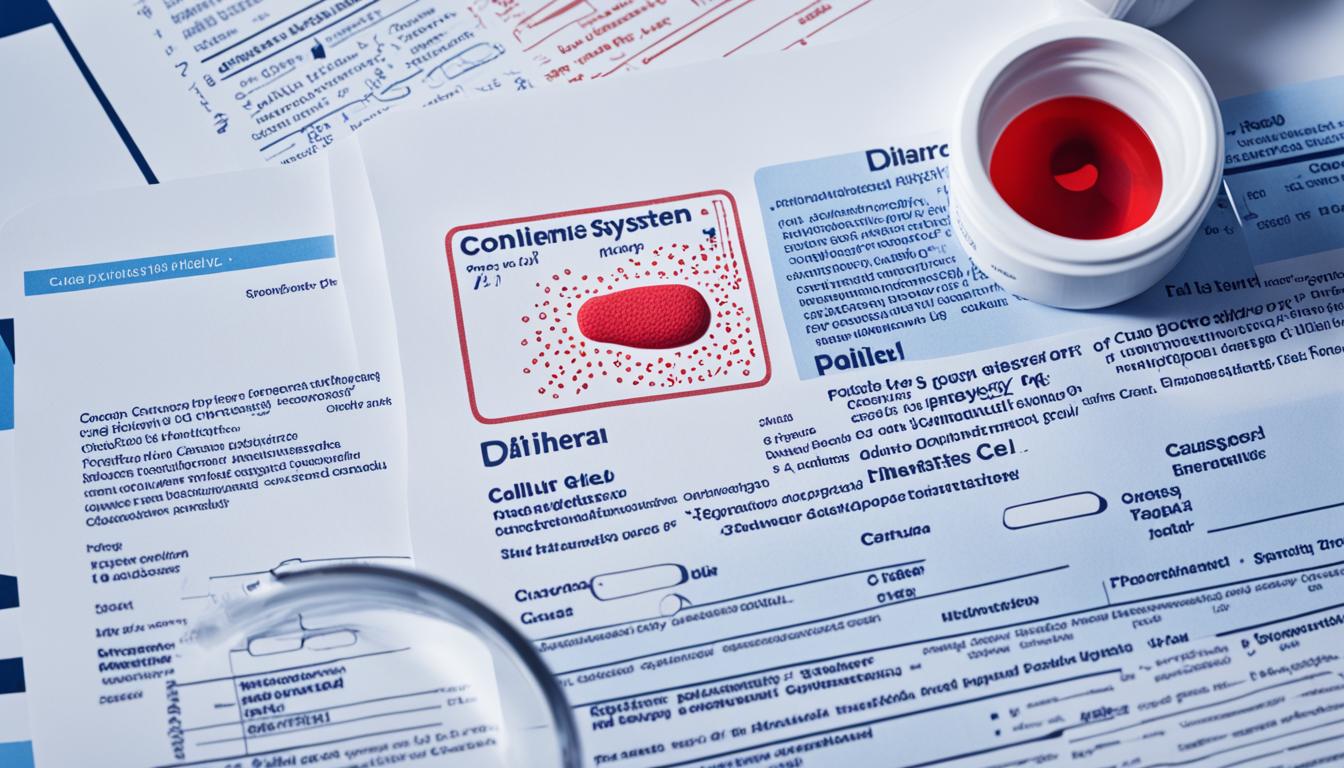Antibiotic-associated diarrhea is a condition. It’s caused by taking antibiotics. This issue leads to diarrhea, which can be mild or severe. Symptoms include diarrhea, stomach pain, and a high white blood cell count. Some people might also have a fever, belly soreness, and bloating.
If you’ve taken antibiotics recently, you might be at risk. Other risks are being older, living in a hospital or nursing home, or sharing a home with someone sick. Diagnosing this condition means testing your stool. This can be done with a test called polymerase chain reaction (PCR) or by checking for certain toxins.
To treat this, stopping the antibiotic is the first step. Then, doctors might recommend medicine like oral fidaxomicin or vancomycin. For severe situations, or if the issue keeps coming back, surgery or fecal microbiota transplantation might be options. Even if symptoms return in some people after the first treatment, they often do better with a second treatment.
Key Takeaways:
- Diarrhea from antibiotics is a well-known side effect.
- Many patients see their symptoms come back after the first treatment.
- Oral fidaxomicin or vancomycin can help, but in severe cases, surgery might be needed.
- Fecal microbiota transplantation is a new way doctors are fighting this disease.
Causes of Diarrhea Antibiotic-Associated Disease
Diarrhea antibiotic-associated disease is mostly due to antibiotics killing off both good and bad gut bacteria. This action shifts the natural balance in the gut. Because of this, a certain bacterium, Clostridioides difficile, can grow more. It’s often found in diarrhea cases caused by antibiotics.
Taking antibiotics isn’t the only thing that can cause this type of diarrhea. Other factors play a role. These include getting older, staying in a hospital or nursing home, being around people with infections, and taking drugs that reduce stomach acid. Yet, not everyone who takes antibiotics gets this illness. These extra factors just put a person more at risk of having it.
In short, antibiotic-induced diarrhea stems from a change in the gut’s bacteria. This change lets Clostridioides difficile grow rapidly, causing diarrhea. Age, time in hospitals, being around sick people, and taking certain drugs can also make this more likely.
Diagnosis and Management of Diarrhea Antibiotic-Associated Disease
Diagnosing diarrhea linked to antibiotics needs careful review and some lab work. Doctors first check if the patient has new diarrhea. Then, they test the stool. This might include using the polymerase chain reaction (PCR) or testing for toxins.
These tests spot Clostridioides difficile. This germ is often the cause of antibiotic-associated diarrhea. Depending on where the patient is, doctors either use these tests alone or combine them with other methods. Sometimes, looking inside the gut with a scope helps confirm the diagnosis.
After a diagnosis, treating the disease quickly is very important. The first step is to stop the antibiotic that started the problem. Then, give the patient medicines like fidaxomicin or vancomycin by mouth. In tough cases, surgery or getting new gut bacteria from someone else might be needed. These methods can be very effective in treating the disease.

